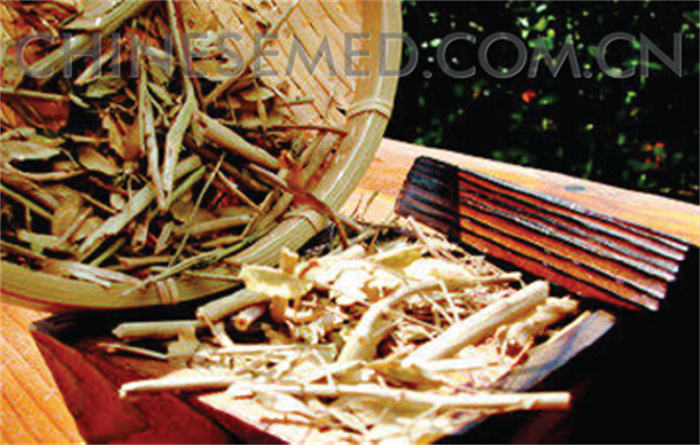
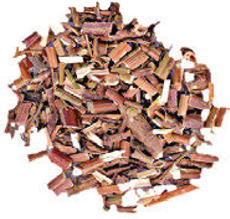
Source Patrinia is the herb of Patrinia villosa Juss. or P. scabiosaefolia Fisch. (Fam. Valerianaceae).
Producing Areas Sichuan, Hebei, Henan and Northeast China, etc.
Properties Spicy, Bitter, Slightly Cold
Channels Large Intestines, Liver, Stomach
Action
- Clears heat, removes toxins, and reduces inflammation
For internal-fire toxins causing intestinal abscesses or acute appendicitis. Also eliminates pus and toxins on the skin causing carbuncles, sores, and swellings. Used both internally and topically.
- Eliminates pain due to blood stasis
For blood stagnation caused by heat in the abdomen or chest. Also relieves post-partum and post-operative pain, dysmenorrhoea and endometriosis.
Usage and Dosage
6 – 15g is used in decoction for oral use, or up to 30g used for severe conditions at physician’s instructions. Suitable amount of the pounded one is used externally.
Notes Use with caution in pregnant women or patients with abdominal pain due to asthenic cold of the spleen and stomach.
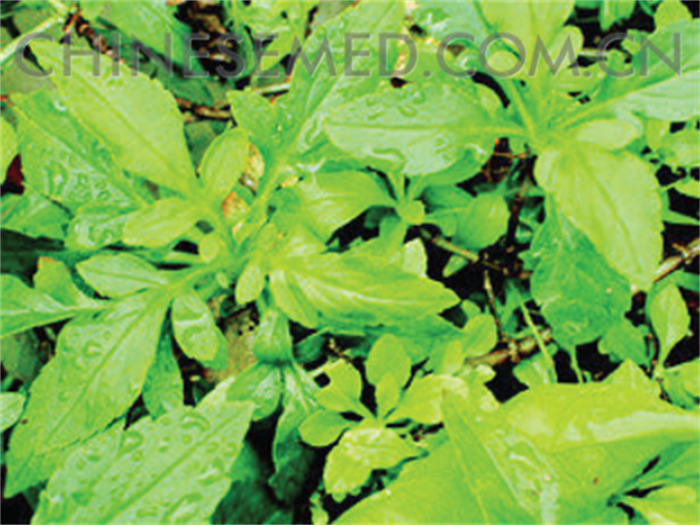


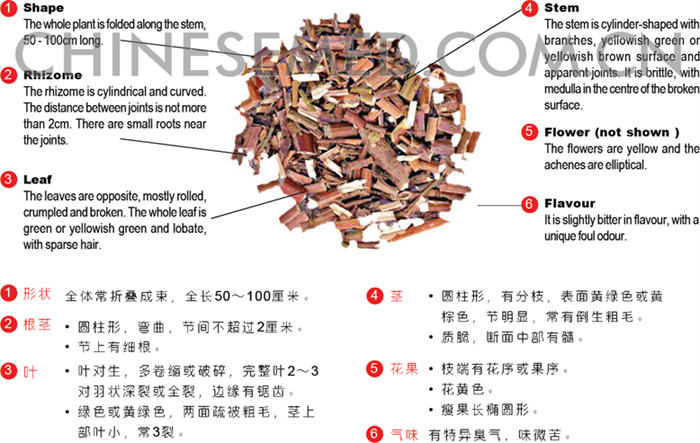

The distance between each pair of joints on the rhizome is 3 – 6cm, and there are many stout roots. The stem has white hair and no branches. The stem leaves are not lobate. The flowers are white.
Storage
Keep in a cool, dry place.
Description of Quality Herb
The good one has a long root, many green leaves and a strong smell.
Professional Advic
In many parts of China and in countries that import patrinia from China, including Singapore, the herb used is not Patrinia scabiosaefolia or Patrinia villosa.
Subaijiang
In Jiangsu, Zhejiang, Hunan and Hubei, the product used is Subaijiang, which is the whole herb of the cruciferous plant Ximing.
The whole herb with fruit attached is 15 – 55cm long, greyish-yellow or greyish-green in colour. The stem is cylindrical with diameter 1 – 5mm, greyish-yellow in colour. Its leaves are mostly broken and shed. The fruit is 0.8 – 1.5cm long, 0.5 – 1.3cm wide, rounded at one end and slightly indented at the top, internally divided into 2 segments each containing 5 – 7 seeds. The whole herb is brittle and easily broken. It is light in nature and has a weak flavour.
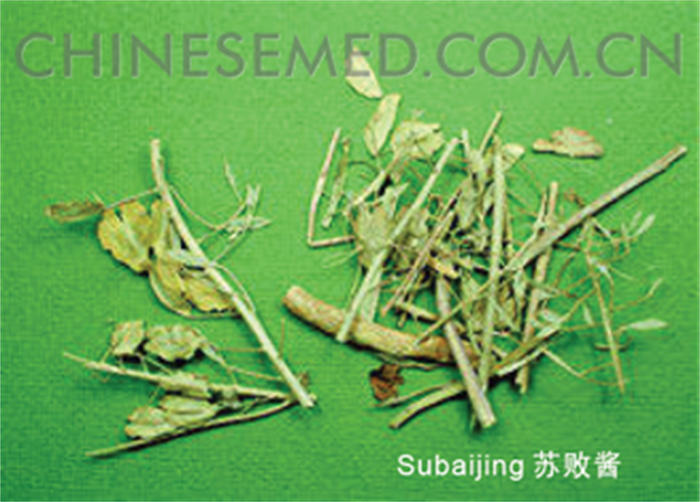
Beibaijiang
In the northern regions of China, the product used is Beibaijiang, which is the fresh or dried whole herb of endive (Sonchus oleraceus L.).
It is the whole herb including roots. The rhizome is cylindrical, tapering downwards, greyish-brown in colour with many rootlets at the top. The stem is also cylindrical with a flattened top, 35 – 95cm long and 4 – 8mm in diameter. It is yellowish-green in colour with a faint purplish hue near the base and dark green pubescence at the upper part. It is crisp and brittle, easily broken, with a hollow cross-section. The roots are spindle-shaped and greyish-brown in colour. The leaves are alternately growing, curled and broken, needle-shaped when unrolled. The flowers are light yellow in colour and may have fruits attached. It is light in nature and slightly bitter in flavour.
